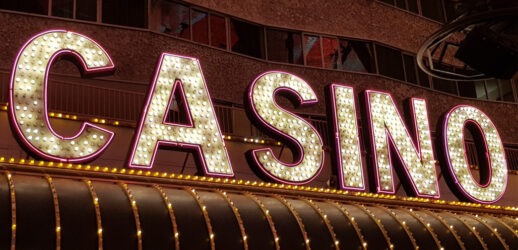What the pandemic taught hoteliers about keeping you healthy—physically, mentally and holistically
Call them Lessons of the Plague Years. During the lockdowns and the slow downs (or, more precisely, the screeching halt) to travel, the hotel industry did more than furlough workers and bring in the crews to paint and reconfigure, cart in fresh furnishings and install enhanced safety features like air filtration and hand sanitizer stations at every turn. Those tasked with imagineering the industry’s future were also watching you.
Closely—as if their livelihoods depended on it. Because they do.
You and your fellow road warriors, grounded—as we all were—by Covid’s global rampage, were changing. As Teresa Flyger, director for global brands at Hilton Hotels Worldwide, puts it, “As we continue facing the implications of the pandemic, one thing is clear: It has never been more important to care for yourself and those around you.”
“We’re seeing a democratization of well-being,” is how Emyln Brown, vice president of well-being for Accor, puts it with obvious enthusiasm. “Movement is the best word for it. Trend implies it’s a phase. Take the exciting mainstreaming of meditation. Ten years ago, if you said you meditate, you were strange. Now it’s ‘what type’?”
Tammy Routh, senior vice president of global sales for Marriott International, agrees. “It’s absolutely a movement. I can use myself as a perfect example. I used to travel every single week. It took the pandemic to make me realize I want to take better care of myself. So, going forward, we need hotels to help us, each brand in its own swim lane—even select-service brands. How does that breakfast that comes with the room rate have healthy options? How do you bring in programming for really healthy exercise? Customers are going to demand that the hotel industry help them achieve those goals when they aren’t at home.”
Where only months ago, it was sanitation theater and fresh air that all the major hospitality players trumpeted, now their promised customer journeys are shifting, even as the Omicron variant poses renewed uncertainties for group and leisure travel. In effect, hotels are trying to keep up with how you—and your groups—have evolved over the past two years. Here’s a closer look at the “why” and “what” of this phenomenon.
The Holistic Hotel
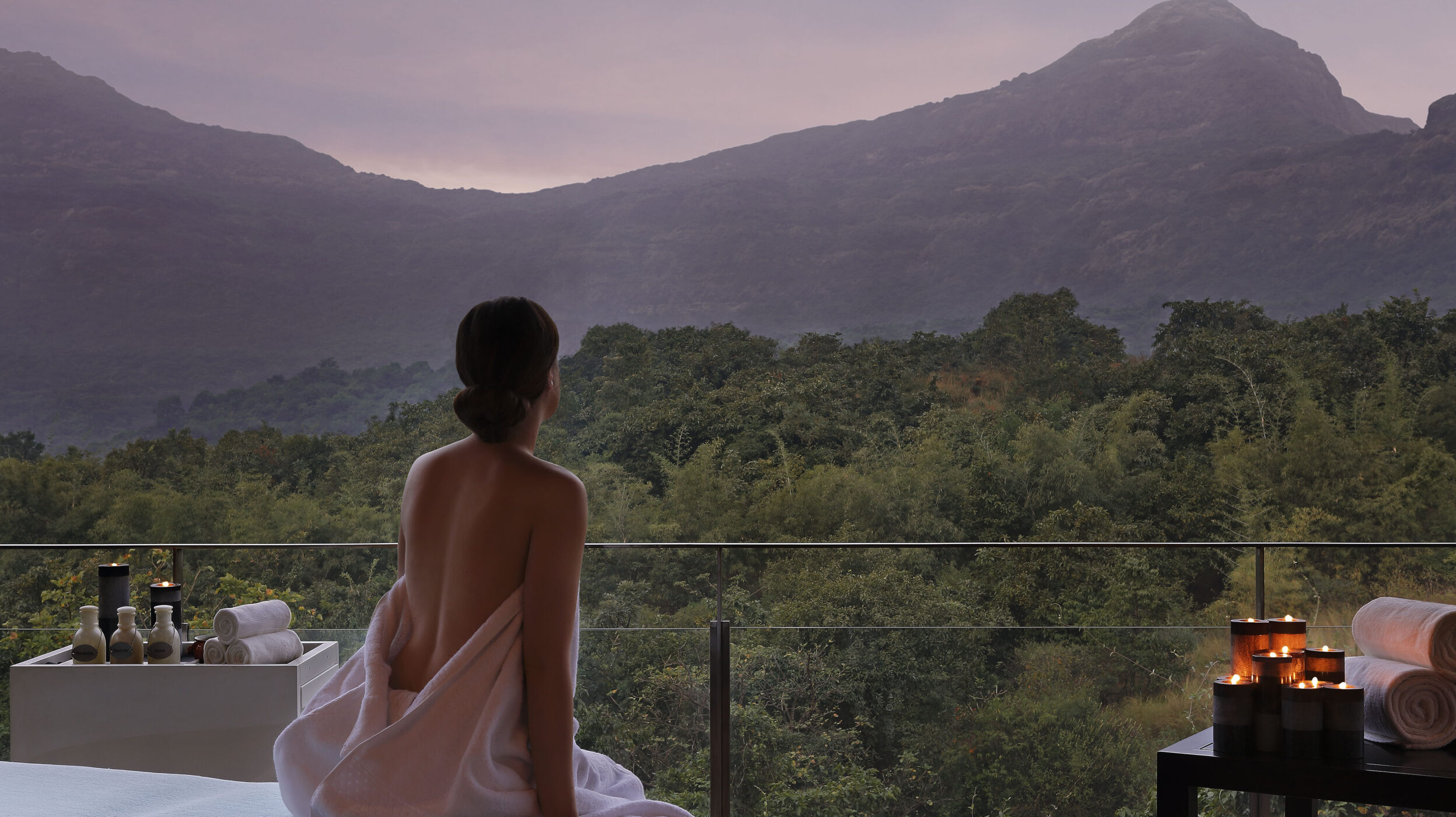
How far we’ve come from “heads on beds” as the simple mantra of the hospitality industry. “That’s why, whether it be through spa and fitness amenities, food and beverage offerings or our overall hotel design, we’ve leaned into a holistic approach to better address the needs of our evolving world,” in Flyger’s words.
Hoteliers are increasingly mindful that guest demographics are shifting, too. “What does a millennial and GenZ-er want? It’s a more social and fun experience,” Accor’s Brown says. “Fitness is not a differentiator, it’s standard, and it needs to be complex. They’re looking to do things in-room, in an app or on the television. F&B delivery will [see] an uptick in veg, vegan, etc.—everybody’s got a dietary requirement. I want my juice, I want my vegan dinner.”
He continues of the emerging mindset: “You also have to support my mental well-being. Create places within the resort or hotel where I have a little peace. Well-being is not just within the room and spa. Yet in room design, you have to have proper blackout shades, a cutoff switch for electronic frequencies, circadian lighting and so on.
“And authenticity is absolutely critical. That younger demographic sniffs out things that are offensive. You can’t ‘wellness wash’ this.”
Case Study: It’s Time for Tempo
Of course, there have long been hotel brands that lead with wellness. Marriott’s Westin, for one. At Westin Cape Coral Resort in Florida, for example, groups can get “wellness-inspired F&B” curated to align with company wellness goals, walking meal periods where attendees grab a bite and then do a marina-side stroll while refueling, standing classroom sessions, as well as instructor-led chair yoga, laughing yoga and breathing exercises.
More: Ommmm-nipresent: Yoga’s Many Incarnations
For groups, Hilton has perhaps the longest-running offering showcasing wellness. Now in its sixth year, Meet with Purpose is an extension of the company’s Travel with Purpose program and focuses on three pillars—Mindful Eating, Mindful Meeting and Mindful Being—and allows meeting professionals to integrate healthy menus, wellness activities and sustainable elements into their agendas.
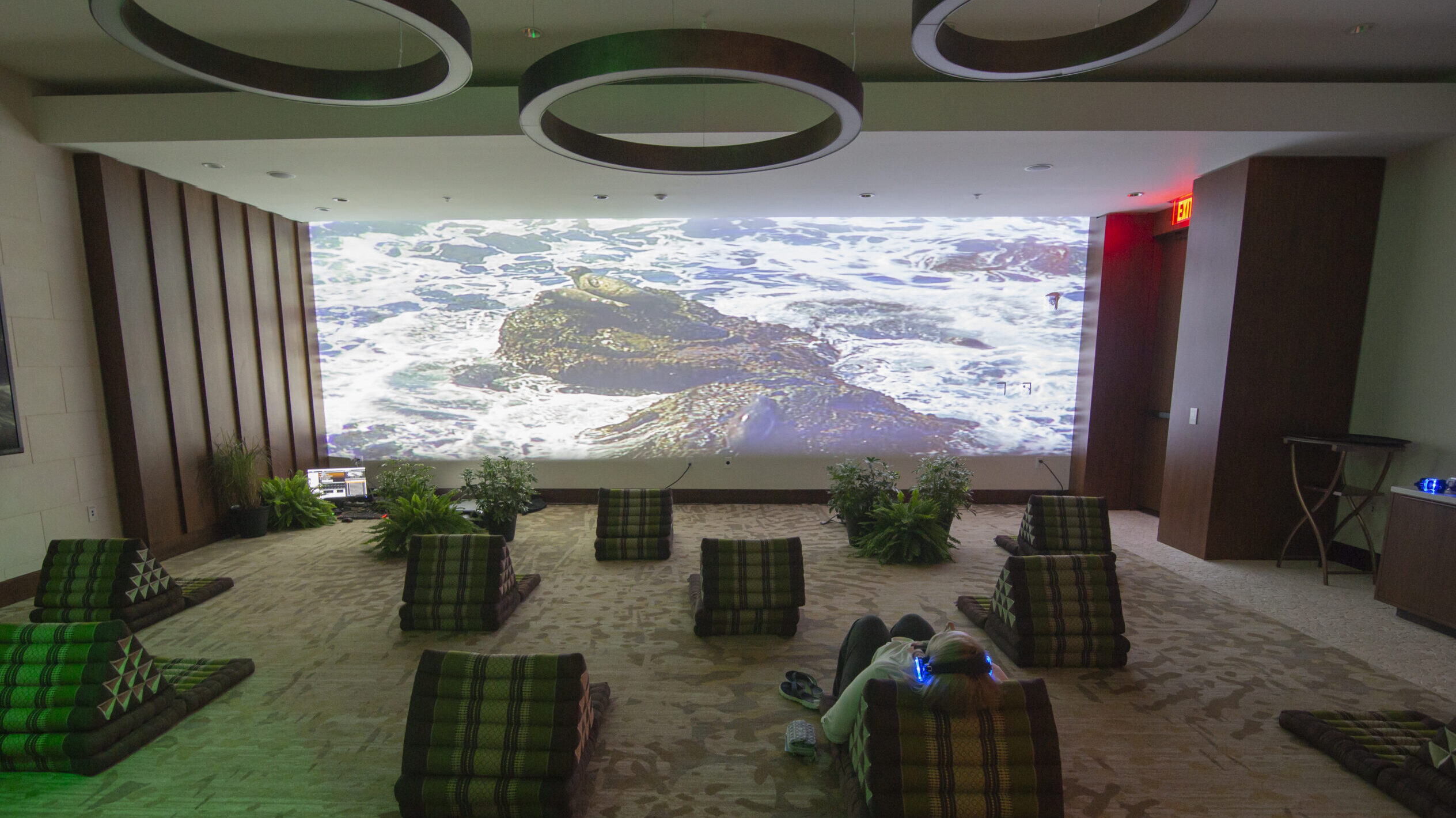
Wellness and rejuvenation have been long-standing differentiators In the luxury sphere, too. Guests at Waldorf Astoria Maldives Ithaafushi, a Hilton property, can tap into a wellness concierge for advice and guidance, a new Aqua Wellness Center features a custom-built hydrotherapy pool and ice fountain, and the outdoor pool is designed in zones to target different parts of the body. JW Marriott promotes The Whole You, the right balance of work and play, mind, body and spirit. (A Zen Den at JW Marriott Beach Resort Marco Island in Florida floods group attendees in soothing images and sounds while they sip a cup of herbal tea.) Hyatt’s Miraval destination resorts promise to help guests achieve that balance through mindfulness and healthful eating. Accor’s Raffles brand has Emotional Wellbeing by Raffles, offering bespoke experiences “holistically infused with elements to nourish body, mind and heart.”
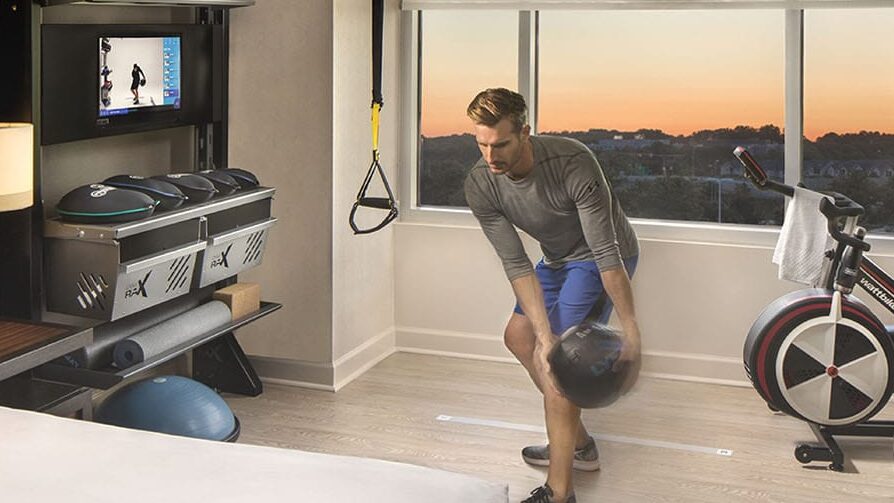
In recent years, hospitality giants have ratcheted-up wellness offerings at popular big box hotels: Stay Well rooms at MGM Grand Las Vegas and Park MGM Las Vegas offer aromatherapy, advanced air purification and other wellness-focused amenities. Long before Covid checked in, Hilton launched its Five Feet to Fitness guest rooms—which come with nearly a dozen types of workout equipment and accessories supported by video training sessions just steps from bed.
But Hilton upped its wellness game in 2020, announcing its 18th brand, Tempo. Some 60 of the new brand’s flags are in development, with a 130-room new-build in Louisville, Kentucky, leading the way; its opening is expected this year. Tempo represents an important step in the democratization of wellness. It’s not a luxury brand, but it is very much in response to the changing landscape of demand.
“Tempo by Hilton is an approachable lifestyle brand designed to appeal to an emerging class of travelers—modern achievers—who are looking for a hotel that reflects their personal success and ambition,” Flyger says. “To help guests find their happy medium, Tempo focuses on five aspects of travel that today’s evolving guests are looking for, including nutrition, fitness, social spaces to encourage human interaction, sleep and mindfulness and recovery.”
A partnership with Bluestone Lane, an “Australian-inspired” premium coffee roaster, cafe and lifestyle brand, will provide guests with “more progressive fare with healthier options,” including vegetarian, vegan and gluten-free. The state-of-the-art fitness studio has a “recovery zone with Therabody products that help massage tired muscles.”
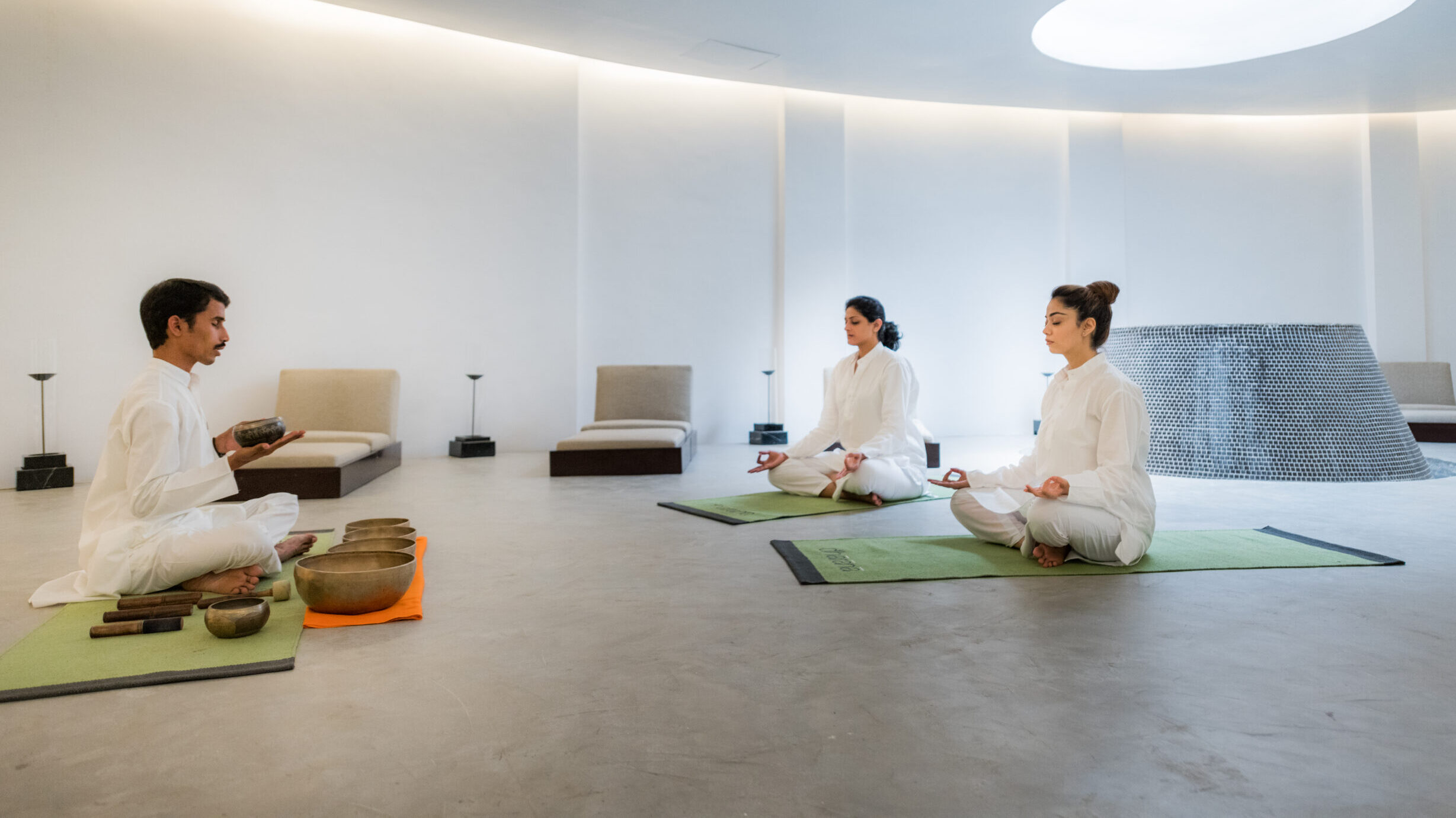
Guest rooms have been rethought. “They feature three zones—the Get Ready Zone, Bath Suite and Power Down Zone—which are all designed for the guest experience in mind,” Flyger says. “In some hotels, the hallway leading to the guestroom is dead space; at Tempo the bathroom was reorganized to allow for more space to stretch, do yoga and prepare for the day. At the dry vanity, guests can prepare for the day, practice a presentation or use it as part of their morning wellness routine. At night, Tempo’s signature bedtime rituals that focus on mindfulness and meditation routines help guests unplug and fall asleep faster.”
An open lobby (a concept even Marriott’s venerable Sheraton redesign has adopted) will have dedicated spaces to relax, work, socialize and collaborate. In addition to flexible meeting spaces, more informal areas are designed “for brainstorming with teammates or concentrating on individual tasks.”
In sum, Flyger predicts the new brand “will meet the needs of today’s evolving travelers and appeal to a wide audience looking for balance in their everyday lives.”
The Well-being Community
Perhaps it’s an outgrowth of the loneliness of Covid isolation and working from home. Maybe it’s just an extension of the imperative to connect via social media. Whatever the reasons, hoteliers are seeing an acceleration of demand by guests to feel linked to a community, to be part of something bigger than themselves. And that includes a community of well-being.
That’s why, at Accor’s business-oriented Pullman brand—which already offers groups wellness-focused amenities and activities like hydration stations with infused waters and photography walks—the newest wrinkle is the Fitness Squad. In partnership with fitness company Les Mills International, this concept brings streamed fitness classes and dance-to-music sessions led by “fitness ambassadors” from around the world into the hotel.
“Our philosophy is that community can be driven by the exercise experience,” Brown says. “If you look at this in comparison to the old hotel game, it’s night and day. It’s a very dynamic and complex thing. Our demographic studies show that 65 percent of our guests exercise twice a week, and the numbers go up as you get younger.” Through this streamed programming, available 24/7, he believes, “we can touch the heart and spirit of our guests, to inspire and animate exercise and fitness.”
Routh says Marriott is also keenly focused on making the hotel a hub for community—it was one of the priorities of the Sheraton redesign, for instance. Wellness is ripe for creating community by extending the reach of a group gathering, she believes, via digital content sent to attendees before the event. The message: “We’re going to have this meeting, but we want you to bring your best selves.”
At Hilton, Flyger adds, they are hearing more and more that guests are “craving social human communal engagement, while still social distancing.” They “want to be alone but not lonely.” That has led to more consciously designing and reconfiguring common areas to create spaces that both energize and encourage connections—both mainstays of a sense of healthy and alive.
More: 9 Success Mantras for Meeting Planners
The impetus to join the community happens in two ways, Brown says—what he calls the push and pull of well-being. “The push is the stress we’ve been under during the pandemic. We understand as individuals that we must own our own health. That’s driving people toward a healthy way of life. The pull factor is the aspiration. Seeing someone doing the headstand, drinking the green juice.”
The Spa and Beyond
The spa experience has been synonymous with a sense of well-being at least since the Romans built a thermal spa at the hot springs of what is now Bath, England, in 70 A.D. What Brown calls “the bathing experience” is evolving, too. It’s not a replacement for traditional spa services and treatment, but no spa attendant or masseuse is needed.
“Traditionally, you have your steam and sauna, shower, then walk away,” he says. “Now you come in, go to multiple stations—boutique fitness, dynamic bathing in hot and cold, then recovery, as in cryotherapy and infrared sauna; there can even be a food and beverage element. They’re dressing and training like an athlete, so why not recover like an athlete? That for me is the most exciting development in 2021 and beyond.”
See more: Spas Venture Outside the Box
Keeping up with higher expectations extends to other aspects of the hotel stay, as well. “From a food and beverage perspective,” Flyger says, “people are paying closer attention to the ingredients, preparation and sourcing of their food. We have seen a rising interest in low-ABV beverages and locally sourced food choices, and are responding to these interests with menu changes, including locally sourced ingredients and health-conscious options.” Routh agrees, adding, “What I have seen is that wellness in the meetings and event space is very customized. Everyone has a slightly different meeting objective. Especially in F&B, where the chef loves nothing more than creating something new and unique.”
Individual properties are creating memorable experiences to enhance mental health. W Fort Lauderdale, a Marriott property in Florida, just debuted a new Sensory Reset experience for groups. This one-of-a-kind setup includes a room decked out to stimulate the senses and serve as a mental reset between meetings. Think a table with playful putty and fidget spinners to appeal to touch; ASMR videos on loop with plush seating for sight and sound; aromatherapy and oil bar for smell; and a selection of mints, frozen fruit and other bites to invigorate the palate.
“Well-being is enhanced by engaging the senses of sight, smell and sound with nature,” Flyger says. “Ambient sounds and aromas of nature can be programmed to subconsciously increase joy, energy and calmness. Green walls, embalmed [preserved with nontoxic injection] plants, sounds of or view of water, natural light, and nature-focused artwork all address the increasingly popular trend of biophilia, or desire to bring the feel of the outside in.” Biophilia will be “a big design focus for our hotels in 2022,” she says.
Well-being on the Hook
 Where does all this leave meeting professionals? No doubt Routh is not alone among her hospitality peers in being thrilled to be having discussions with planners again about wellness and well-being features in choosing destinations and programming for meetings and incentives. Even in the recent past, those conversations were mainly about safety.
Where does all this leave meeting professionals? No doubt Routh is not alone among her hospitality peers in being thrilled to be having discussions with planners again about wellness and well-being features in choosing destinations and programming for meetings and incentives. Even in the recent past, those conversations were mainly about safety.
She points out this gives planners yet another reason to include these features and market them heavily: They can be tantalizing bait. Covid-weary attendees, she says, will feel grateful to their company or other sponsoring organization for the chance to recharge and rebalance at a destination that showcases them.
“Plus it’s absolutely a reassurance to the possibly reluctant meeting-goer,” she says.
Measuring the Covid Effect
Marriott’s Westin brand wanted to measure the Covid effect on their customers’ well-being. A global study found it had been profound.
- 65 % of participants said the pandemic made them realize the importance of self-care.
- More than 50% said they were doing more running and jogging—for mental health.
- 72% became really focused on sleep.
The Right Fit
It should come as no surprise that Peloton reported triple-digit increases in revenue, fitness subscriptions and workouts at the end of fiscal 2020. And interest in at-home workout gear only strengthened as the pandemic dragged on.
“The world was still sweating, just in new ways,” says Hilton’s Flyger. “We have recognized that during the past two years, people changed the way they exercised dramatically. We used to build gyms and fitness experiences that were always aspirational and new, above what guests experienced day-to-day. Now, with more advanced at-home equipment and access to limitless, high-quality on-demand fitness, guests are looking to hotels not for new solutions but to meet them where they are at: providing the level of equipment and experience that they have in their home or everyday life.”
“Fitness is now the way to draw in customers,” echoes Accor’s Brown. “What was already a trend is now in hyperdrive.”




